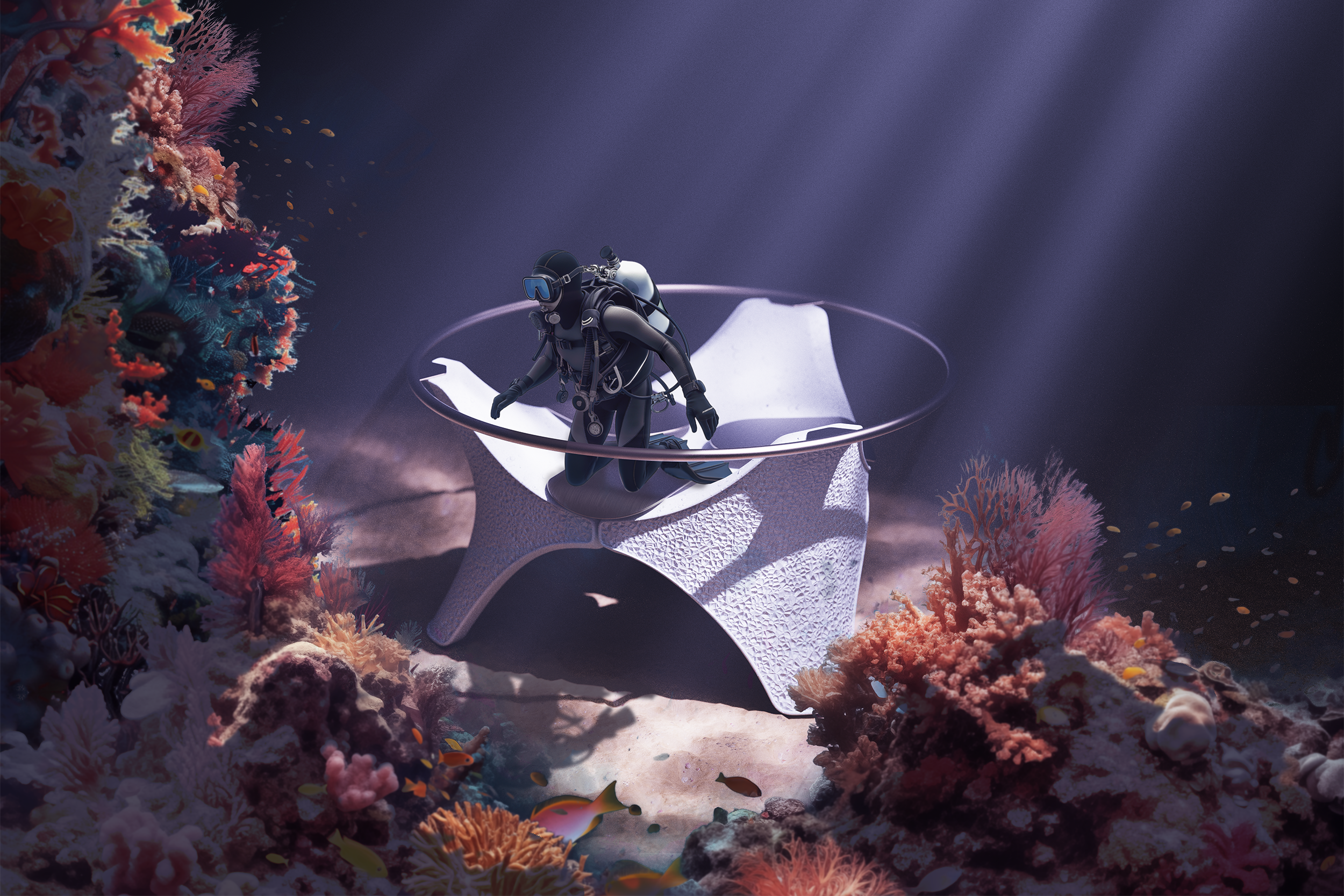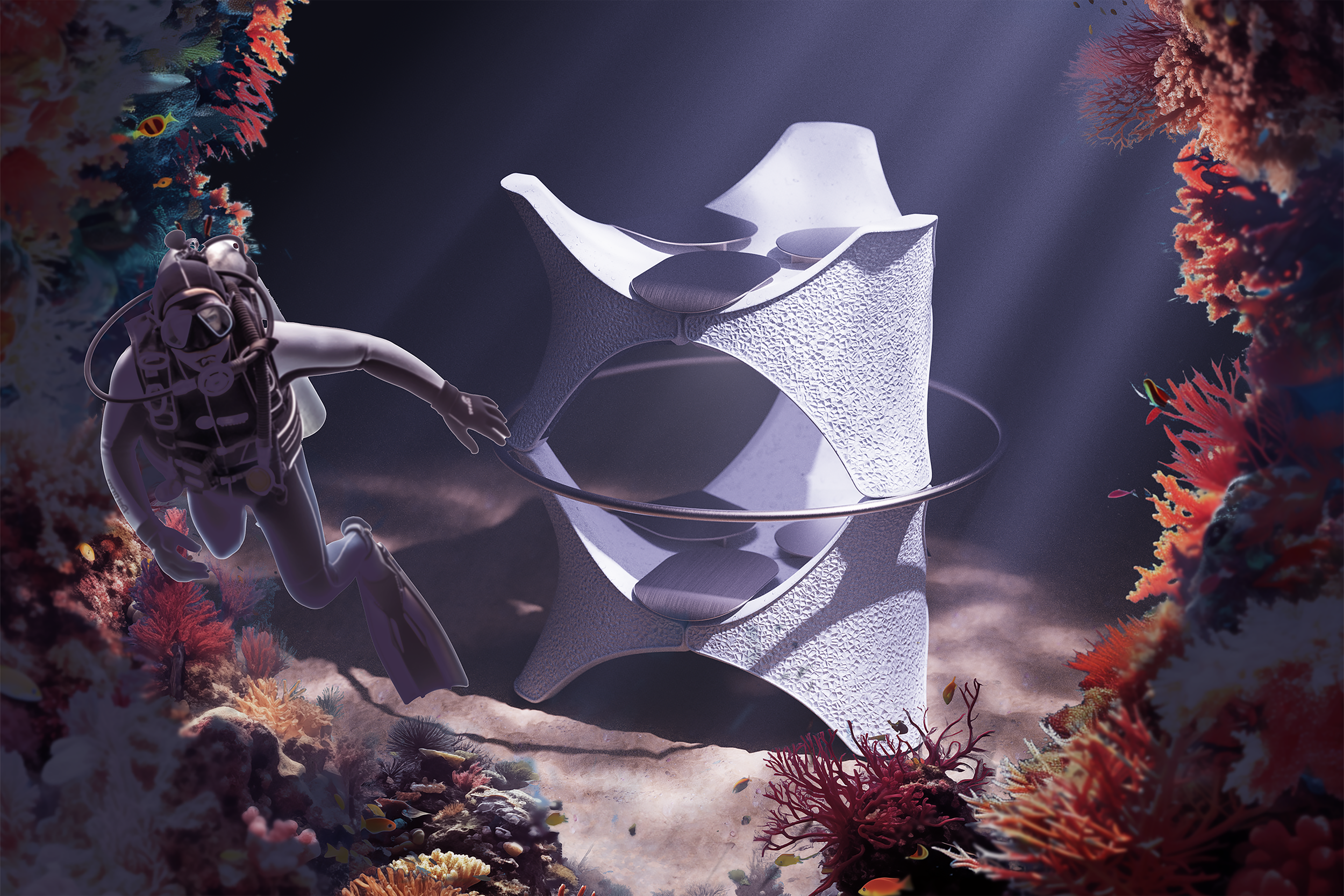
32% of divers hold on to corals while diving
46% of divers hold on to corals with strong current
49% of divers stir up sediments when resting
Can the liminal underwater space between humans and corals be “furnished” so both can thrive?
Comfort in Atlantis
In collaboration with SEAC sub and Better Factory.
Resting is crucial for divers, but it can significantly disrupt marine life underwater.
Two main problems arise during divers’ resting periods. Firstly, there’s the issue of suspended sediments, which harm corals and algae by reducing their growth rate. In a study, it was found that 49% of divers stirred up sediments when resting, covering corals with them. Secondly, there’s the problem of divers holding onto corals while resting, with 32% of divers doing so and 46% holding onto corals in strong currents. As a result, the seabed becomes a conflicted space where divers and marine life must coexist and should be transformed into a place where both can thrive.1
To transform the underwater environment into a haven for divers’ comfort and ecosystem preservation, NMASA Design envisioned the concept of “furnishing” underwater spaces, using speculative design to shape this future utopia.
NMASA Design delved into underwater ergonomics, studying how divers rest and move underwater. Simultaneously, the studio studied artificial coral reefs to extract insights useful for designing structures that promote marine ecosystem improvement.
By considering factors such as preferred surfaces for corals, algae, and marine fauna, the studio crafted a versatile modular system of furniture and underwater structures that feature designated areas with irregular hard surfaces full of cavities, optimal for marine life colonization and preservation. At the same time, these structures offer an exciting and aesthetically pleasing safe place for divers to rest and observe without stirring up sediments or affecting mature coral reef formation.
This thoughtful design ensures a harmonious balance between both “users” of this liminal underwater environment and is expected to influence future developments of artificial coral reefs.
Barker, N. H. L., & Roberts, C. M. (2004). Scuba diver behaviour and the management of diving impacts on coral reefs. Biological Conservation, 120(4), 481-489
H. L., & Roberts, C. M. (2004). Idem 5 Zulaiha, Zainal & Mohamed, Badaruddin. (2014). A Review of SCUBA Diving Impacts and Implication for Coral Reefs Conservation and Tourism Management. SHS Web of Conferences. 12. 10.1051/shsconf/20141201093.
A new vision of what an artificial coral reef could look like

Results exhibited during the Southern Sweden Design Days 2024 as part of the exhibition “Artifacts for a scuba diving utopia”




